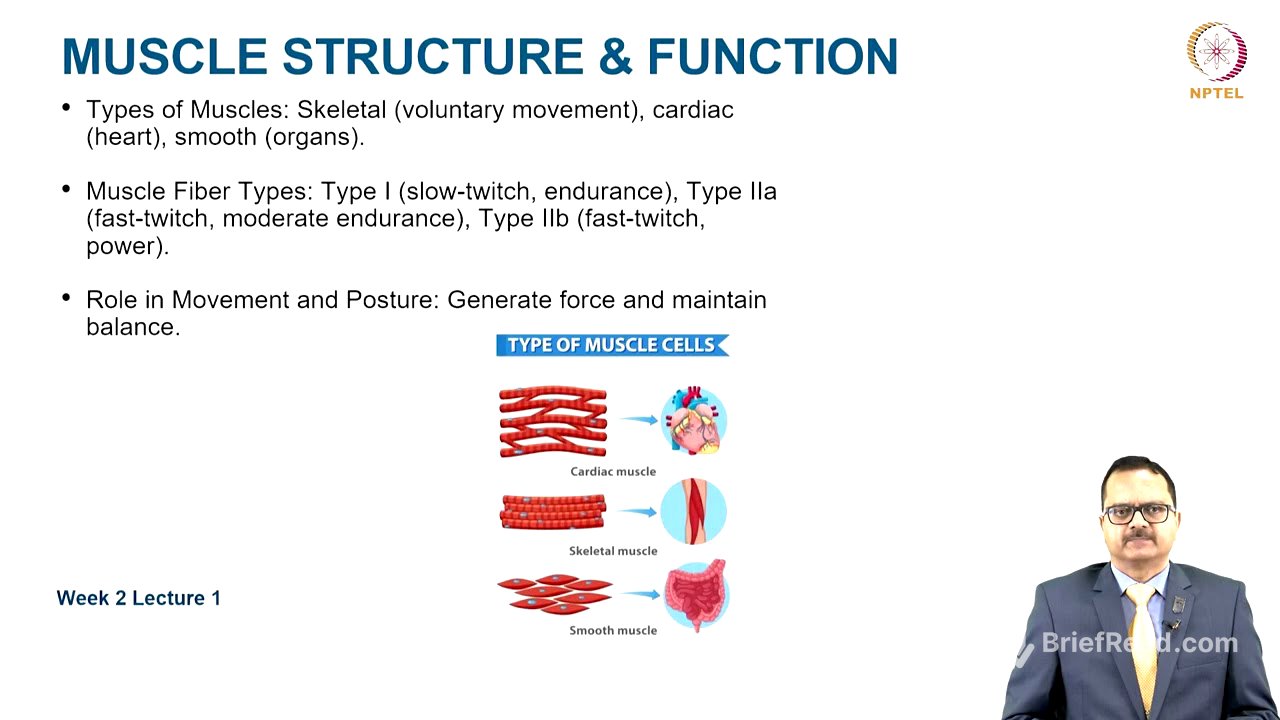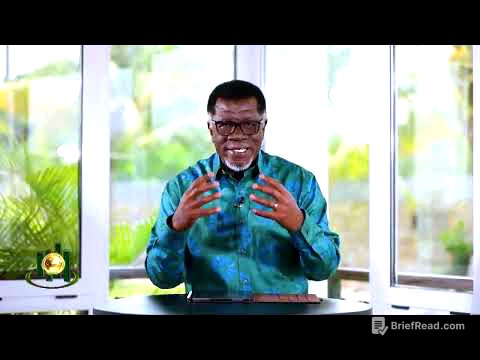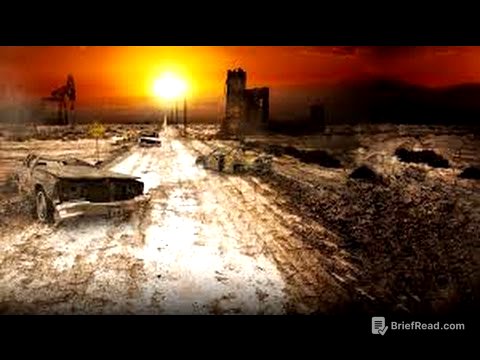TLDR;
This lecture provides an overview of the musculoskeletal system, emphasizing its importance in sports performance and overall health. It covers the components, structure, and function of bones, joints, muscles, tendons, ligaments, and cartilage, as well as the role of the nervous system in coordinating movement. The lecture also addresses biomechanics, age-related changes, gender differences, common injuries, and future trends in musculoskeletal health, such as stem cell therapy and wearable technology.
- The musculoskeletal system is crucial for movement, support, and protection of vital organs.
- Understanding biomechanics and proper training techniques can minimize injury risk.
- Future trends focus on regenerative medicine, wearable technology, and personalized rehabilitation programs.
Introduction to the Musculoskeletal System [0:16]
The lecture introduces the musculoskeletal system, outlining the topics to be covered: role, components, structure, function, biomechanics, gender differences, special populations, and future trends. The musculoskeletal system, comprising bones, muscles, joints, tendons, and ligaments, facilitates movement, provides structural support, and protects vital organs. A well-functioning musculoskeletal system is crucial for strength, agility, endurance, and injury prevention in athletes and all individuals. Understanding biomechanics, training loads, and recovery techniques minimizes the risk of injuries.
Components of the Musculoskeletal System [2:15]
The components of the musculoskeletal system include bones, joints, muscles, tendons, ligaments, and cartilage, all controlled by the nervous system. Bones provide a structural framework and protection. Joints allow movement and flexibility. Muscles generate the force for movements. Tendons connect muscles to bones, while ligaments connect bone to bone, stabilizing the system. Cartilage cushions joints and absorbs impact. Proper integration of the nervous system is required for coordination of movement and proprioception.
Bone Structure and Function [3:13]
Bones are classified into long (femur), short (carpals), flat (scapula), irregular (vertebrae), and sesamoid (patella) types, and can be compact (cortical) or spongy (trabecular). Their main functions are to provide support and movement, store minerals, and produce blood cells in the bone marrow. Bone growth and remodeling occur through ossification, with osteoblasts forming bone, osteoclasts resorbing bone, and osteocytes maintaining bone. Mechanical loading influences bone growth, as stated by Wolff's law, where bones adapt to stress, and weight-bearing activities strengthen bones along tensile force lines. Common bone injuries include fractures, such as stress fractures (common in runners) and greenstick fractures (common in children). Healing progresses through inflammatory, reparative, and remodeling phases.
Joint Structure and Classification [6:04]
Joints are classified into synovial (freely movable, e.g., knee, shoulder), cartilaginous (partially movable, e.g., intervertebral discs), and fibrous (immovable, e.g., skull sutures) types. Synovial joints consist of cartilage, synovial membrane, joint capsule, and ligaments. Types of synovial joints include ball and socket (rotational movement), hinge (flexion/extension), pivot (rotational movement), condyloid (angular movement), saddle (grasping), and gliding (sliding movements). Common joint injuries include sprains (ligament injuries), dislocations/subluxations (bones out of alignment), and degenerative conditions like osteoarthritis and rheumatoid arthritis.
Muscles: Types, Function, and Injuries [9:32]
There are three types of muscles: skeletal (voluntary), cardiac, and smooth (involuntary). Skeletal muscles consist of type 1 (slow twitch, endurance), type 2A (fast twitch, moderate endurance), and type 2B (fast twitch, explosive power) fibers. Muscles generate force and maintain balance. Muscle contractions can be isometric (no change in muscle length), concentric (muscle shortening), or eccentric (muscle lengthening). Common muscle injuries include strains (overstretching/tearing), contusions (blunt trauma), and delayed onset muscle soreness (DOMS) due to microtears and inflammation.
Tendons, Ligaments, and Cartilage [12:09]
Tendons, composed of dense connective tissue, connect muscle to bone, transmitting muscle contraction forces for movement and strengthen with resistance training. Common tendon injuries include tendinitis (acute) and tendinosis (chronic overuse), such as Achilles and rotator cuff tendinopathy. Ligaments connect bone to bone, stabilizing joints, and are either elastic (minimal movement) or non-elastic (no movement). Common ligament injuries include ACL and MCL injuries (knee) and ankle sprains, with slow healing due to limited blood supply. Cartilage types include hyaline (joint surfaces), fibrocartilage (knee meniscus), and elastic (ear), absorbing shock, distributing forces, and allowing smooth joint movements. Cartilage has poor blood supply, limiting healing. Common injuries include meniscal tears and chondral defects.
Nervous System Integration and Biomechanics [15:20]
The musculoskeletal system relies on nervous system integration for movement control and proprioception (body's ability to sense position and movement). Motor control determines brain-to-muscle coordination, and nerve injuries reduce movement efficiency. The kinetic chain concept describes the interconnectedness of joints and muscles throughout the body, where movement in one area affects others. Proper force application and absorption, stability, mobility, and balance are required for injury prevention and optimal performance. Strength and power development are essential for athletic success, and proper conditioning reduces injury risk.
Age-Related Changes and Gender Differences [18:05]
Age-related changes in youth athletes involve rapid bone ossification and muscle growth, potentially leading to conditions like Osgood-Schlatter disease. Beyond age 40, there is a decline in muscle mass (sarcopenia) and bone density (osteopenia/osteoporosis), preventable through strength training, nutrition, and mobility training. Gender differences, influenced by hormones like estrogen and testosterone, result in women being at higher risk for injuries like ACL tears due to hormonal and anatomical differences. Training programs should be tailored to address these gender-specific factors.
Future Trends in Musculoskeletal Health [19:43]
Future trends in musculoskeletal health include stem cell therapy for cartilage, tendon, and ligament regeneration, wearable technology for tracking biomechanics and preventing injuries, and tissue engineering for regenerative medicine, especially in cartilage regeneration. Artificial intelligence in sports medicine, newer regenerative therapies, and precision-based rehabilitation programs are also emerging. Musculoskeletal health is essential for performance and longevity, with ongoing advancements in prevention, rehabilitation, technology, and research.









